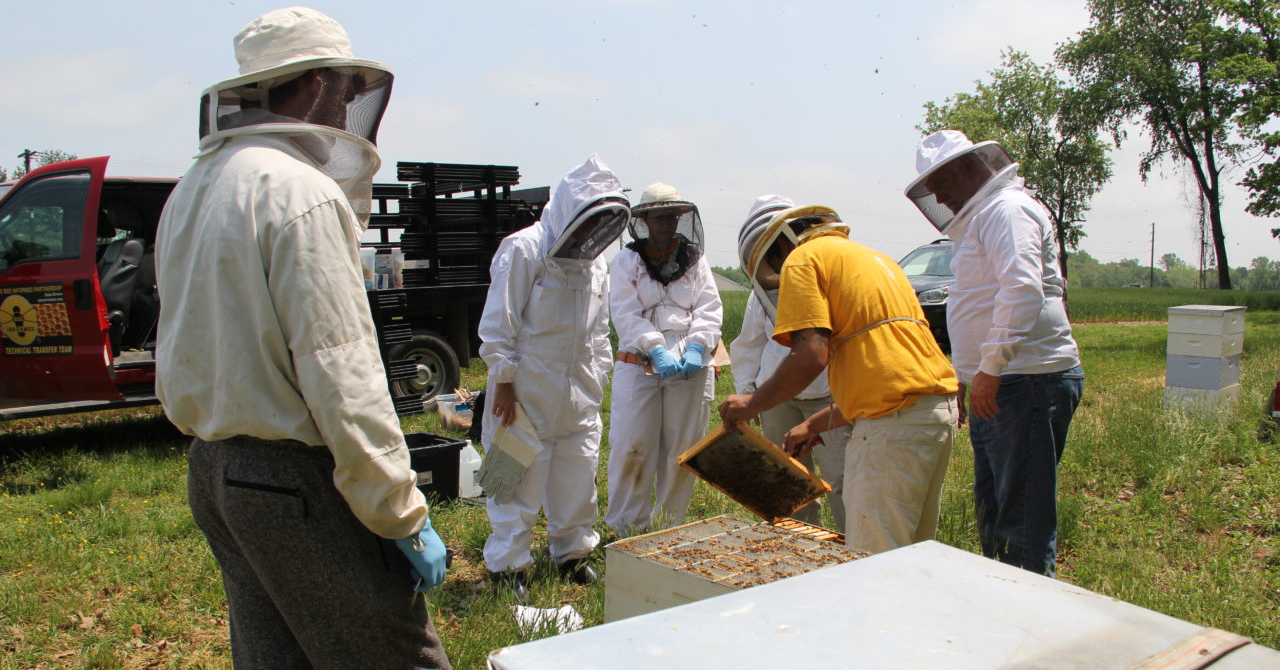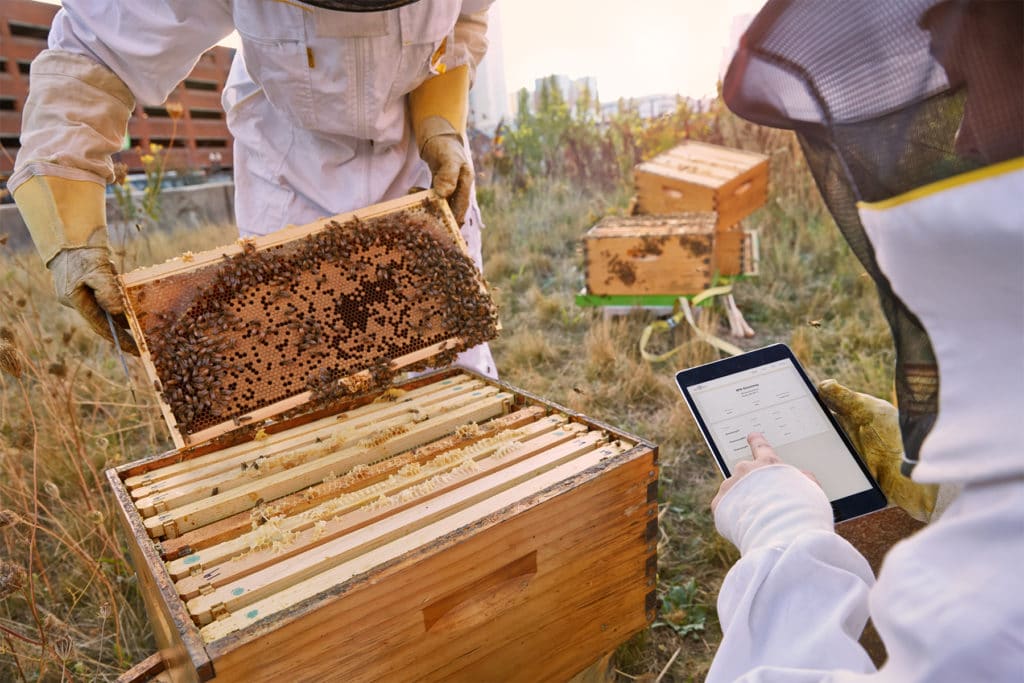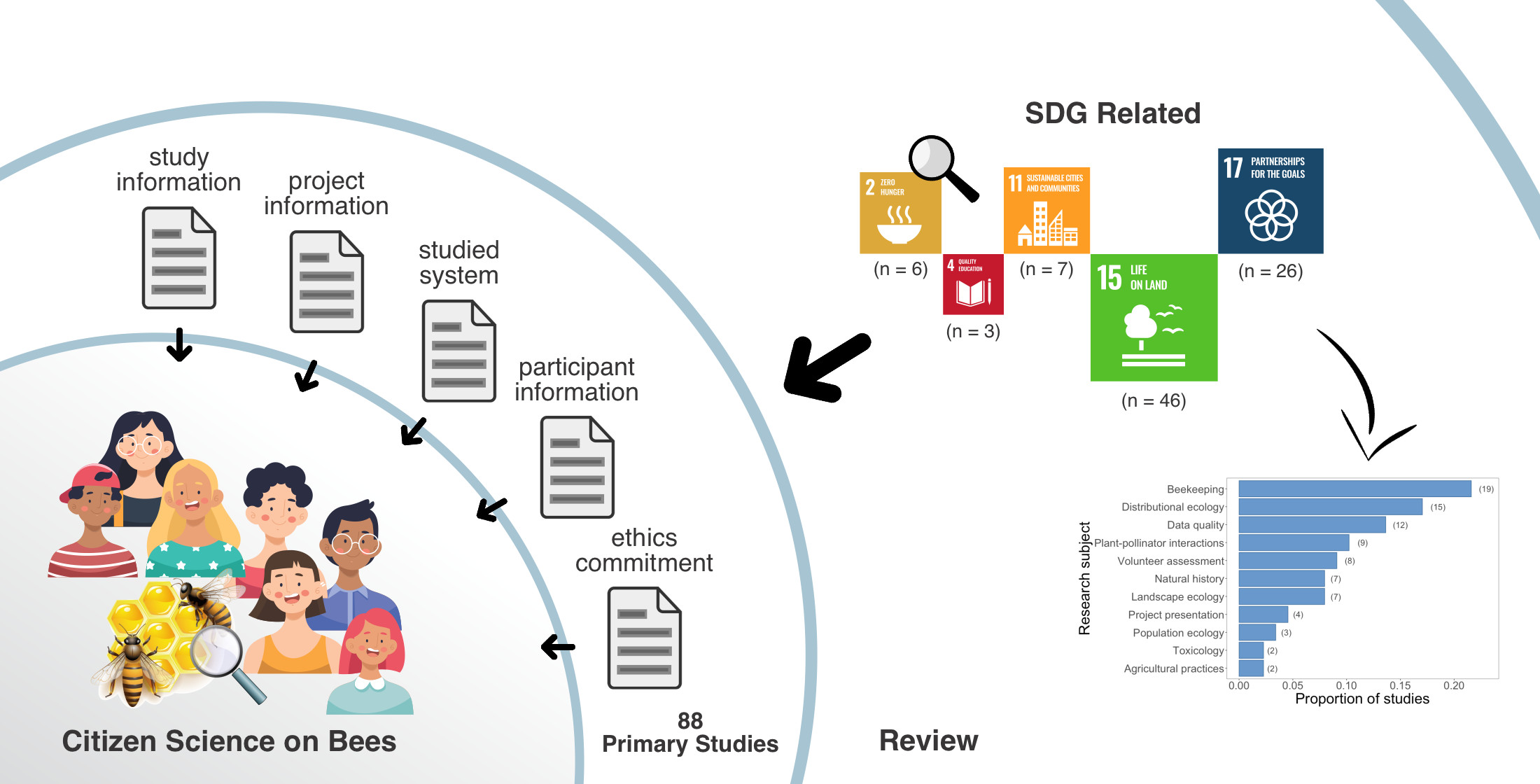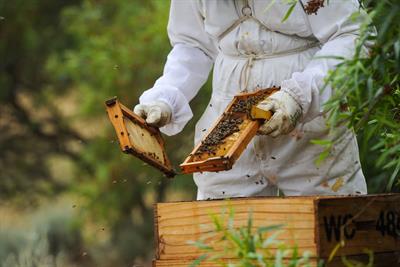Contents
- I. Introduction to Beekeeping and Citizen Science
- II. The Importance of Beekeeping in Citizen Science Initiatives
- III. Getting Started with Beekeeping for Citizen Science
- IV. Benefits of Beekeeping for Citizen Scientists
- V. Beekeeping Equipment and Supplies for Citizen Science Projects
- VI. Best Practices for Beekeeping in Citizen Science
- 1. Maintain Proper Hive Management
- 2. Provide Adequate Forage Resources
- 3. Use Sustainable Pest Management Techniques
- 4. Practice Responsible Beekeeping Hygiene
- 5. Keep Accurate Records
- 6.Prepare for Seasonal Transitions Be aware of seasonal changes and adapt your management practices accordingly. For instance, provide adequate ventilation during hot summers or insulation to protect colonies during harsh winters. 7. Participate in Local Citizen Science Projects
- 8. Educate Yourself Continuously
- VII. Challenges and Solutions in Beekeeping for Citizen Science
- VIII. Collecting and Analyzing Data in Beekeeping Citizen Science Projects
- IX. Engaging the Community in Beekeeping Citizen Science
I. Introduction to Beekeeping and Citizen Science

Beekeeping is an ancient practice that involves the management of honey bee colonies for the production of honey, beeswax, and other bee-related products. However, it goes beyond just harvesting these natural treasures. In recent years, beekeeping has gained attention as a form of citizen science that allows individuals to actively participate in research and conservation efforts related to bees.
The Importance of Bees for our Ecosystems
Bees play a crucial role in pollination, a process that facilitates the reproduction of flowering plants by transferring pollen from male flower parts (anthers) to female flower parts (stigmas). This process enables plants to produce fruits and seeds necessary for biodiversity maintenance and food production. In fact, it is estimated that one out of every three bites of food we consume can be attributed directly or indirectly to pollinators like bees.
The Decline in Bee Populations
In recent decades, there has been a concerning decline in bee populations worldwide due to multiple factors such as habitat loss, pesticide use, climate change, diseases, pests, and parasites. This decline poses significant threats not only to agriculture but also to natural ecosystems.
Citizen Science: Engaging Individuals in Bee Research
Citizen science refers to scientific research conducted by non-professional scientists or volunteers who assist professional scientists with data collection or analysis. It provides an opportunity for individuals with little or no scientific background to contribute meaningfully towards understanding complex ecological phenomena such as the decline in bee populations.
The Benefits of Engaging in Beekeeping as Citizen Scientists
Beekeeping offers numerous benefits for individuals interested in citizen science. Firstly, it allows them to directly observe and interact with honey bee colonies, gaining a deeper understanding of their behavior, life cycle, and ecological interactions. Secondly, citizen scientists can actively contribute to data collection by monitoring bee populations and reporting their observations to research projects or organizations dedicated to bee conservation. This data helps researchers track population trends and identify potential threats.
II. The Importance of Beekeeping in Citizen Science Initiatives

Beekeeping plays a crucial role in citizen science initiatives, offering a unique opportunity for individuals to actively participate in scientific research while contributing to the conservation and understanding of bee populations. By engaging in beekeeping as citizen scientists, people can make valuable contributions to the field of entomology and environmental conservation.
1. Monitoring Bee Health
One significant aspect of beekeeping within citizen science initiatives is the ability to monitor bee health. Beekeepers regularly inspect their hives, checking for signs of disease or pests that could harm the bees. By recording these observations and sharing them with researchers, citizen scientists provide essential data on the prevalence and geographic distribution of diseases affecting bees.
2. Studying Pollination Patterns
Beekeeping also allows citizen scientists to contribute to studies on pollination patterns. Bees are vital pollinators for many plant species, including crops that humans rely on for food production. Through their involvement in beekeeping, citizens can document which plants bees visit most frequently and observe changes in plant-pollinator interactions over time.
3. Assessing Environmental Impact
Citizen science programs focused on beekeeping offer an opportunity to assess the impact of environmental factors on honeybee populations. By monitoring hive conditions such as temperature, humidity levels, and pesticide exposure, participants can collect data that helps identify potential stressors affecting bees’ well-being.
4. Enhancing Conservation Efforts
Beekeepers involved in citizen science initiatives contribute significantly to conservation efforts by creating safe habitats for bees through hive management practices and promoting sustainable farming methods that prioritize pollinator protection.
In conclusion,
Beekeeping serves as a powerful tool within citizen science initiatives, allowing individuals to actively contribute to scientific research while fostering a deeper understanding of the importance of bees in our ecosystems. By monitoring bee health, studying pollination patterns, assessing environmental impact, and enhancing conservation efforts, citizen scientists play a crucial role in safeguarding these vital pollinators for future generations.
III. Getting Started with Beekeeping for Citizen Science

Are you interested in beekeeping and want to contribute to citizen science? Beekeeping is not only a rewarding hobby but also an opportunity to participate in scientific research and conservation efforts. By becoming a citizen scientist, you can help gather valuable data about bees and their habitats, contributing to our understanding of these important pollinators.
1. Educate Yourself about Beekeeping
The first step in getting started with beekeeping for citizen science is to educate yourself about the basics of beekeeping. Learn about different types of bees, their life cycle, behavior, and the equipment needed for beekeeping. There are many online resources, books, and local workshops available that can provide you with the necessary knowledge.
2. Join a Local Beekeeping Association or Club
To gain practical experience and connect with experienced beekeepers, join a local beekeeping association or club. These organizations often offer beginner courses, mentorship programs, and hands-on training sessions where you can learn from seasoned experts in the field.
3. Choose Suitable Equipment
Selecting the right equipment is crucial for successful beekeeping. Invest in high-quality hive boxes, frames, protective clothing (such as gloves and veils), smokers (used to calm bees), hive tools (for inspecting hives), and feeders (to provide supplemental food). Ensure that your equipment meets safety standards while being comfortable for both you and the bees.
4. Find an Ideal Location
Finding a suitable location for your beehives is essential. Bees thrive when they have access to abundant sources of nectar and pollen nearby such as flowering plants or trees. Ensure that your chosen location provides adequate sunlight protection from harsh winds, and is easily accessible for regular inspections and maintenance.
5. Start with a Small Number of Hives
When starting out, it’s advisable to begin with a small number of hives. Managing a few hives will allow you to learn the ropes without feeling overwhelmed. As you gain experience and confidence, you can gradually expand your apiary.
6. Monitor Bee Health and Behavior
As a citizen scientist beekeeper, monitoring the health and behavior of your bees is crucial. Regularly inspect your hives for signs of diseases or pests (such as varroa mites), observe their foraging patterns, record hive temperatures, and note any unusual behaviors or changes in population size. This data can contribute to ongoing research on bee health and conservation.
7. Participate in Research Projects
Beyond collecting data for personal observation, consider participating in research projects led by universities or scientific organizations focused on studying bees’ behavior, genetics, pollination patterns, or environmental impacts. These collaborations provide valuable insights into the world of bees while contributing to scientific knowledge.
Beekeeping as citizen science offers an opportunity to engage with nature while making meaningful contributions towards understanding these fascinating creatures better. By following these steps and continuously learning from experienced beekeepers and scientists alike, you can embark on an exciting journey in beekeeping that goes beyond personal enjoyment – benefiting both bees’ well-being and scientific communities worldwide.
IV. Benefits of Beekeeping for Citizen Scientists
Beekeeping offers numerous benefits to citizen scientists, allowing them to actively contribute to scientific research while also enjoying personal rewards. Here are some key advantages of engaging in beekeeping as a citizen scientist:
1. Hands-on Learning Experience
Beekeeping provides a unique opportunity for citizen scientists to engage in hands-on learning. By caring for and observing the behavior of bees, individuals can gain practical knowledge about the intricate workings of a beehive and understand the complexities of bee colonies.
2. Contribution to Scientific Research
Citizen scientists play a crucial role in advancing scientific research related to bees and their habitats. By participating in data collection initiatives, such as monitoring colony health or tracking pollinator populations, beekeepers can provide valuable information that helps scientists analyze trends and make informed decisions regarding conservation efforts.
3. Environmental Stewardship
Beekeeping promotes environmental stewardship by supporting pollinator populations and enhancing biodiversity within local ecosystems. Bees play an essential role in pollinating flowering plants, which contributes to the reproduction of various crops and wildflowers.
4. Honey Production
A rewarding benefit of beekeeping is the production of honey—a natural sweetener with various health benefits and culinary uses. Beekeepers can harvest honey from their hives while ensuring sustainable practices that prioritize the well-being and survival of the bee colony.
5. Personal Connection with Nature
Beekeeping allows individuals to establish a deeper connection with nature by observing bees’ behaviors up close on a regular basis. Spending time outdoors tending to beehives offers relaxation, stress relief, and an opportunity for mindfulness amidst nature’s wonders.
Incorporating beekeeping into citizen science initiatives not only benefits individuals but also contributes to global efforts in conservation and biodiversity preservation. Whether you are a beginner or an experienced beekeeper, participating in this form of citizen science provides a fulfilling and impactful experience. So why not embark on your own beekeeping journey and join the ranks of passionate citizen scientists making a difference for bees and the environment?
V. Beekeeping Equipment and Supplies for Citizen Science Projects
When it comes to engaging in citizen science projects related to beekeeping, having the right equipment and supplies is essential. Here are some of the key items you’ll need:
Beehive Kits
A beehive kit serves as the home for your bees and provides them with a safe and comfortable environment. It typically includes hive boxes, frames, foundation sheets, inner covers, outer covers, and bottom boards. Choose a beehive kit that suits your needs based on factors such as hive style (Langstroth or top-bar) and the number of frames it can accommodate.
Beekeeping Protective Gear
Keeping yourself protected while working with bees is crucial for both safety and peace of mind. A bee suit made of thick fabric that covers your entire body will shield you from stings. Additionally, wear gloves made specifically for beekeeping to protect your hands.
Hive Tools
Hive tools are indispensable when it comes to inspecting hives or manipulating frames inside them. These tools usually include a hive tool scraper for prying apart hive components, a frame grip tool for lifting frames out of the hive without damaging them or injuring bees, and a bee brush for gently removing bees from comb surfaces.
Smoker
A smoker is used to calm honeybees during inspections by producing cool smoke that masks alarm pheromones released by guard bees. This helps keep the bees calm so you can work more efficiently without causing unnecessary stress or aggression among them.
Honey Extraction Equipment
If one of your goals in participating in citizen science projects is harvesting honey sustainably from your hives while maintaining their health, you’ll need honey extraction equipment. This typically includes a honey extractor, uncapping knife, strainers, and storage containers for the extracted honey.
Remember that before acquiring any beekeeping equipment or supplies, it’s important to familiarize yourself with local regulations and guidelines regarding beekeeping. Additionally, consider choosing suppliers who prioritize sustainability and the well-being of bees.
VI. Best Practices for Beekeeping in Citizen Science
Beekeeping is not only a rewarding hobby but also an important contribution to citizen science. By participating in citizen science initiatives, beekeepers can help collect valuable data that aids in research and conservation efforts. To ensure the success of your beekeeping endeavors as a citizen scientist, it is essential to follow these best practices:
1. Maintain Proper Hive Management
Regular hive inspections are crucial for identifying potential issues early on and ensuring the health and well-being of your bees. Monitor hive conditions, including honey stores, brood development, pests, diseases, and overall colony strength.
2. Provide Adequate Forage Resources
A diverse range of flowering plants provides bees with essential nectar and pollen sources throughout the year. Planting native wildflowers or creating pollinator-friendly gardens near your hives can enhance their foraging opportunities.
3. Use Sustainable Pest Management Techniques
Pests like Varroa mites pose significant threats to bee populations worldwide. Employ integrated pest management strategies such as monitoring mite levels regularly and using treatments only when necessary to minimize chemical exposure.
4. Practice Responsible Beekeeping Hygiene
Maintain cleanliness by regularly cleaning equipment, replacing old comb frames, and preventing the accumulation of debris within hives. Good hygiene practices help prevent disease transmission among colonies.
5. Keep Accurate Records
Maintaining detailed records allows you to track hive performance over time and contribute valuable data to scientific studies effectively. Note observations such as colony behavior, productivity levels, seasonal changes in population size or honey production.
6.Prepare for Seasonal Transitions
Be aware of seasonal changes and adapt your management practices accordingly. For instance, provide adequate ventilation during hot summers or insulation to protect colonies during harsh winters.
7. Participate in Local Citizen Science Projects
Collaborating with local beekeeping associations or research institutions can provide opportunities to contribute data and learn from experienced scientists and fellow beekeepers. Get involved in monitoring programs, workshops, or field studies that align with your interests.
8. Educate Yourself Continuously
Beekeeping practices evolve over time due to new research findings and emerging challenges. Stay updated on the latest trends, attend workshops, read scientific literature, and engage in discussions with other beekeepers to expand your knowledge base.
By incorporating these best practices into your beekeeping routine as a citizen scientist, you can make a meaningful impact on honeybee health while enjoying the fascinating world of bees. Remember that every action you take contributes to the larger picture of understanding and conserving these vital pollinators.
VII. Challenges and Solutions in Beekeeping for Citizen Science
Beekeeping is an essential practice for citizen science, allowing individuals to contribute valuable data and insights to the field. However, like any endeavor, it comes with its own set of challenges. In this section, we will explore some of these challenges and discuss potential solutions.
1. Lack of Knowledge and Experience
One common challenge faced by citizen scientists entering the world of beekeeping is a lack of knowledge and experience. Beekeeping requires understanding the behavior, needs, and health concerns of bees.
Solution: Education plays a crucial role in overcoming this challenge. Aspiring beekeepers should invest time in learning about bees through courses or workshops offered by local beekeeping associations or experienced mentors. Online resources such as blogs, forums, and videos can also provide valuable information.
2. Disease Management
Bee colonies are susceptible to various diseases that can quickly spread if not properly managed.
Solution: Regular monitoring is vital to detect early signs of disease or infestation. Citizen scientists should learn how to identify common diseases like varroa mites or foulbrood and implement appropriate management strategies such as integrated pest management techniques or organic treatments.
3. Environmental Factors
The environment plays a significant role in the health and productivity of bee colonies.
Solution: Citizen scientists can create a conducive environment for their bees by planting diverse flowering plants that provide nectar throughout the year. Avoiding pesticide use near hives helps maintain a healthy ecosystem for bees.
4. Weather Conditions
Unfavorable weather conditions can impact honey production and overall colony health.
Solution: To mitigate these challenges, citizen scientists should monitor weather forecasts and be prepared with protective measures such as providing additional insulation during cold winters or shading hives during hot summers.
5. Time Commitment
Beekeeping requires regular attention and care, which can be challenging for individuals with busy schedules.
Solution: Planning and time management are essential. Citizen scientists can create a schedule that includes routine hive inspections, maintenance tasks, and seasonal activities to ensure they can dedicate adequate time to their beekeeping responsibilities.
In conclusion, while beekeeping for citizen science offers numerous opportunities, it also presents challenges that must be addressed. By acquiring knowledge, implementing disease management strategies, creating a suitable environment for bees, monitoring weather conditions, and managing time effectively, citizen scientists can overcome these challenges and contribute meaningfully to the field of beekeeping.
VIII. Collecting and Analyzing Data in Beekeeping Citizen Science Projects
In beekeeping citizen science projects, collecting and analyzing data plays a crucial role in understanding the behavior, health, and population dynamics of bees. By actively involving citizens in data collection, researchers can gather large amounts of valuable information that would otherwise be challenging to obtain.
Data Collection Methods
1. Surveys and Questionnaires:
Beekeepers participating in citizen science projects can provide valuable insights through surveys and questionnaires. These tools help gather information about hive management practices, observations on bee behavior, pest infestations, disease prevalence, and more.
2. Hive Monitoring Technology:
Modern advancements have made it possible to collect real-time data from beehives using innovative technologies such as sensors. These devices measure factors like temperature, humidity levels, hive weight changes, sound vibrations within the hive – providing essential information for monitoring colony health.
Data Analysis Techniques
1. Statistical Analysis:
Researchers use statistical analysis to identify patterns or trends within collected data sets. This helps understand correlations between variables such as climate conditions or pesticide exposure with bee populations’ health status.
2. Machine Learning Algorithms:
In recent years, machine learning algorithms have been applied to analyze large datasets collected from citizen scientists effectively. These algorithms can identify complex patterns that might not be apparent through traditional statistical methods alone.
Data Visualization Tools
1.Graphs and Charts:
Data visualization tools help transform raw data into meaningful visual representations such as graphs or charts that are easier to interpret at a glance.
Frequently Asked Questions (FAQs)
Q: How can citizen scientists contribute to beekeeping data collection?
A: Citizen scientists can participate by providing information through surveys, questionnaires, or sharing observations from their own beehives.
Q: What types of data are collected in beekeeping citizen science projects?
A: Data collected can include hive management practices, health indicators (e.g., disease prevalence), environmental factors (e.g., pesticide exposure), and population dynamics.
Q: How is technology used in collecting data from beehives?
A: Technologies such as sensors and monitoring devices are used to gather real-time data on parameters like temperature, humidity levels, sound vibrations within the hive, and more.
Note: The rest of the article continues with further sections discussing other aspects of ‘Beekeeping and Citizen Science’.
IX. Engaging the Community in Beekeeping Citizen Science
Engaging the community in beekeeping citizen science is a vital aspect of promoting environmental awareness and sustainable practices. By involving citizens in scientific research related to bees, we not only gather valuable data but also create a sense of responsibility and connection to nature.
1. Organizing Workshops and Training Sessions
To engage the community effectively, organizing workshops and training sessions can be highly beneficial. These events can be open to people of all ages and backgrounds who are interested in learning about beekeeping and citizen science. Through hands-on activities, participants can gain practical knowledge about bees’ behavior, honey production, hive management, and how to collect data for scientific purposes.
2. Establishing Local Beekeeping Clubs
Creating local beekeeping clubs provides a platform for individuals with shared interests to connect with one another regularly. These clubs can organize meetings where members discuss their experiences, exchange ideas on sustainable practices, share research findings, or collaborate on specific projects related to bee conservation efforts.
3. Collaborating with Schools and Educational Institutions
Schools play a crucial role in shaping young minds towards environmental stewardship. By collaborating with educational institutions at various levels, we can introduce students to the world of bees through educational programs focused on citizen science initiatives like bee monitoring or creating pollinator-friendly gardens within school premises.
4. Hosting Community Events
To foster community engagement further, hosting events centered around bees can be an excellent approach. These events could include honey festivals where local honey producers showcase their products while educating visitors about the importance of pollinators such as bees for food production.
5. Encouraging Online Participation
In today’s digital era, online platforms provide a powerful means to engage a broader audience. Creating social media groups or forums dedicated to beekeeping and citizen science allows individuals from different locations to connect, share experiences, seek advice, and participate in ongoing research projects remotely.
By actively engaging the community in beekeeping citizen science initiatives through workshops, clubs, school collaborations, community events, and online platforms, we can build a strong network of individuals passionate about bee conservation. Together, we can make significant contributions towards understanding bees’ ecological role and promoting sustainable practices for their protection.

Andrew Boyer is an accomplished individual with a deep-rooted passion for bees and their conservation. Born and raised in a small town in Oregon, Andrew developed an early fascination with nature and the environment. He pursued his education at the prestigious University of Oregon, where he obtained a Bachelor’s degree in Environmental Science with a specialization in Entomology. During his time at university, Andrew conducted extensive research on the behavior and ecological impact of bees, earning him recognition from his peers and professors. His dedication to the field led him to internships at local beekeeping associations, where he honed his skills in hive management and honey production. Andrew’s expertise in beekeeping and his commitment to environmental sustainability make him a valuable asset in the conservation of these vital pollinators.

